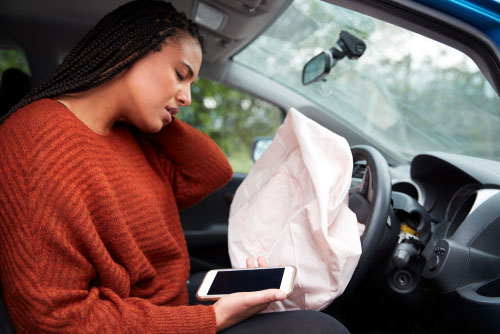After being involved in a Georgia car crash, you may feel confused and hesitant regarding your future course of action. You may be unsure and swamped going through such trauma that you are not able to grasp your legal rights. For instance, negotiating the insurance claim procedure can often be very complex. Insurance administrators often take advantage of accident victims. If you have sustained damages in a Georgia car crash, it is advised to immediately seek legal help from experienced attorneys.
As per the data provided by the Georgia Department of Public Health, car accidents are the leading cause of injury deaths and hospitalizations in Georgia. Such car crashes include traffic as well as non-traffic accidents. In 2017, motor vehicle accidents were the leading cause of death among children and adults in Georgia. In the same year, Georgia had the 4th highest number of traffic deaths.
What Is a Georgia Automobile Accident Report For?
A Georgia car crash report is drafted by the personnel of the police department who report to the crash scene. This report explains data and information in a form easily understandable to everyone. It is devised by the police and provides vital information such as who were the victims of the Georgia car crash and what injuries did they suffer, and how the crash took place. The accident report will also highlight whether the police issued any ticket or imposed any penalty on the victims of the crash.
Reading Boxes on the Georgia Car Crash Report after an Albany Car Accident:
When you observe the Georgia car accident report, you will see various boxes, but how to properly read a report is still vague. In order to have a broader view of its contents, it is easier to classify the report into different sections.
-
Section 1 and 2:
This section of the crash report includes information such as the name of both drivers, and any other driver involved in the crash, including information about each driver’s insurance company, vehicle type and information, insurance policy number, and contact information. There is also a subsection according to which the police check if one of the drivers were at fault.
-
Section 3 and 4:
This indicates whether a test for driving under influence of alcohol or drugs was conducted and the results of such tests.
-
Section 5:
This section accounts for any contributing factors that led to the car crash, whether by the driver of the car, the car itself, or the roadway contributing factors include whether the driver was in the work zone, and in what direction they were moving.
It also includes whether their vision was blurred, how was the weather at the time of the collision, where did the accident impact the vehicle, what was the permitted speed limit, and the speed at which the vehicle operator was driving. Oftentimes, the police officer investigating the case will not conclude who was at fault, but the contributing factors section will indicate which driver was at fault and caused the accident.
-
Section 6:
This section of the crash report explains citation information. Such citations can assist which driver is the culprit in causing the accident.
-
Section 7:
The police officer’s point of view is covered in this section. After the accident, the police will investigate the people present at the site of the crash, collect any data from the eyewitnesses, and also take their opinion regarding who they think was at fault. This is the part where the officers explain their narrative and establish who was at fault.
If the citation was issued by an officer of the police department, the individual receiving the citation is typically found at fault. This area of the report will ascertain which driver is considered to be at fault and why. A diagram section of the report includes information about the road and weather conditions and also facilitates the police to draft an image of the cause that led to the crash.
It is vital that we keep in mind that the courts have the authority to rule a final decision on the civil liability for a crash and not the police.
-
Section 8:
This section consists of information such as names, contact numbers, and addresses of the eyewitnesses.
-
Section 9:
Any damage endured by any property other than the driver’s car is addressed in this section.
How We Can Help with Your Georgia Car Crash:
We at Joe Durham Law comprise of the best accident attorneys in Georgia, who will ensure that you are fairly compensated for any pain or damages suffered by you. Call us today to get the quality legal services you deserve.






